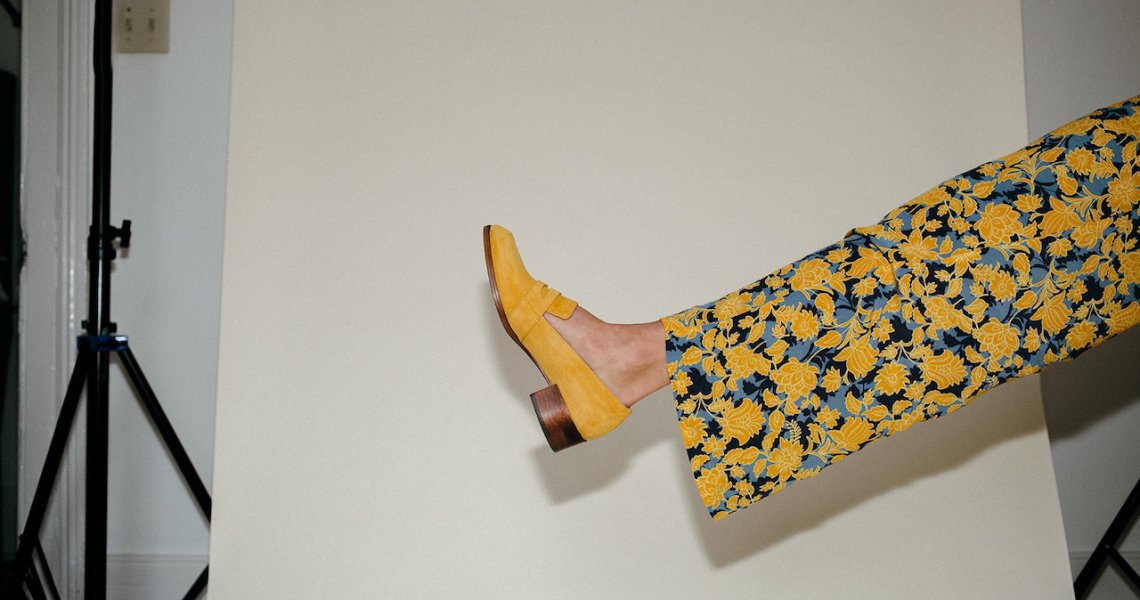Charleston-based, direct-to-consumer shoe brand Thelma, founded in 2016, is writing its own playbook, versus going the traditional DTC route.
For direct-to-consumer brands, things tend to start off the same way: They find a gap in the market then create a high-quality product, selling it for half the price of their wholesale competitors. In addition, they typically hire a buzzy branding firm, gain traction through word-of-mouth, raise seed funding and throw capital at customer acquisition. But there are brands in the space taking an alternative approach of slow, steady growth.
“My journey has been very much a slow fashion journey of growing slowly and not spending big money on advertising dollars. The first year, I was relying on Instagram and word-of-mouth alone, which is a little bit of a suicide mission, but I also really wanted to make sure the product was good,” said Amanda Greeley, founder of Thelma. In recent months, the brand has spent a bit more on paid social through Instagram and on Google search ads to ensure the brand is showing up among competitors.
Like many DTC shoe brands, Thelma works with groups of workshops across Italy to source materials and make the shoes. Finding reliable partners to work with was its own challenge, but Greeley said her greatest challenge, hands down, has been pricing.
“People now expect everything to be cut in half, because they want to hear some story about cutting out the middleman. There are a lot of different kinds of middlemen. DTC brands can spend a ton of money on honing their name, concept, brand voice and brand look, and oftentimes this is done externally. In that sense, this is an example of a different kind of middleman,” she said.
Greeley wrote all the copy for her brand’s website, named the brand on her own and worked with small, local Charleston agencies to help with other design elements. She’s done a few small pop-ups and hosted some trunk shows to spread the word about the brand.
“It’s kind of a shame, because even some of the DTC shoe brands who say they make in Italy do, but they actually use materials that are all imported from Asia to keep costs down. There’s nothing wrong with that, but you actually do lose quality as well,” Greeley said. She has experimented with cutting prices slightly, but found that just under $400 was the sweet spot for the brand.
Ad position: web_incontent_pos1
“The truth is my margins are enough to build a business, but we are not marking these up a ton,” she said. By the time the brand’s shoes reach the U.S. from Italy they typically cost Thelma, “almost as much as a pair of Everlane loafers retails for,” Greeley said. That includes customs and shipping. Currently, Everlane’s penny loafers retail for about $168, while the brand said costs equal $75 for the style’s materials, labor, duties and transport. If Thelma’s shoes cost roughly $185 to make (although the brand declined to share specifics) a $388 price point would fall in line with Everlane’s margins, raising the price post production by roughly triple the cost.
Similarly to Thelma, DTC brand M. Gemi has found it needs to work hard to ensure that customers understand the brand’s story, the products it makes and how it prices those products in order to win over consumers. “What I hear most often is, ‘Oh my god, [that price] is too good to be true. How do you guys do that?’ I think that helping people understand how we do it is pretty important. It’s not a $248 shoe. It’s a $248 shoe that, sold elsewhere, would be upward of $600 to $800,” said Cheryl Kaplan, president at M. Gemi.
“I really couldn’t have priced my shoes any cheaper. I want to keep them under $400. Usually, if you think a price is too good to be true, it probably is,” said Greeley.




